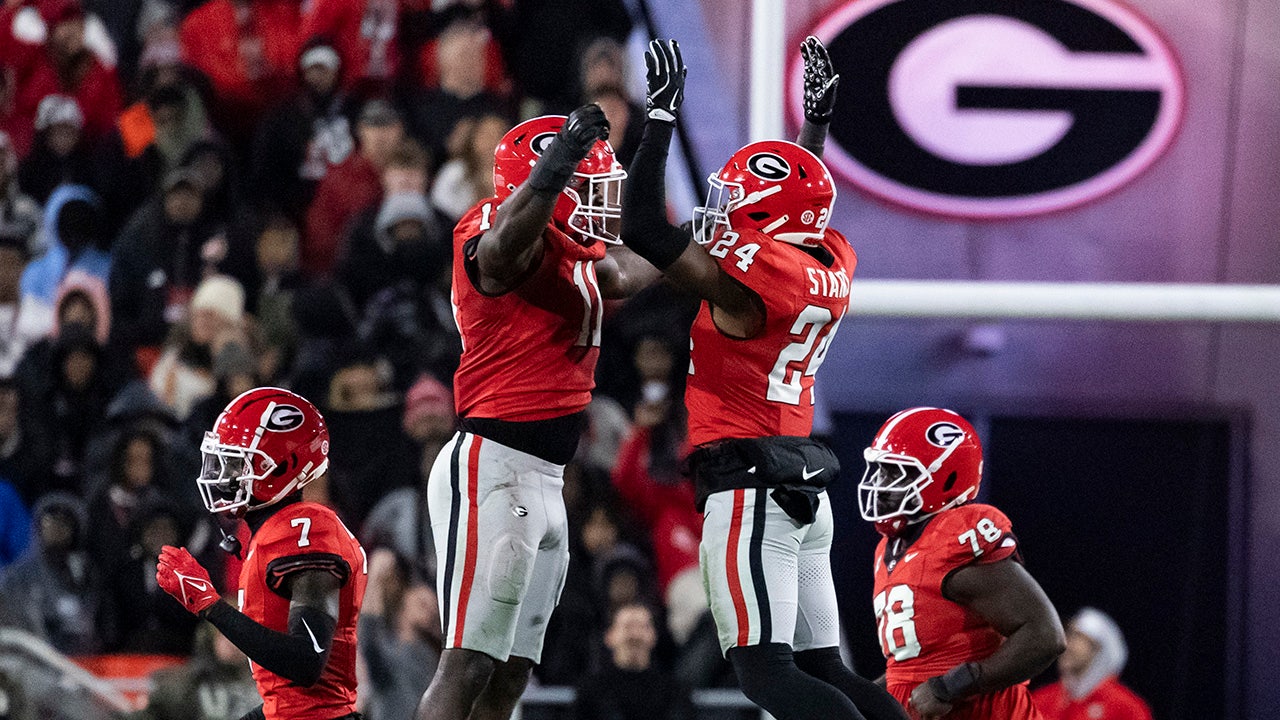BALTIMORE – To call Secretariat a triple crown winner might actually underestimate its dominance. Not only the colt won the Kentucky Derby, the Preakness, and the Belmont Stakes in 1973 – he finished each one in record time.
It was only 39 years before this part of his incredible success became official.
When Secretariat won the Preakness half a century ago, he was a star but not yet a legend. His 31-minute romp at the Belmont was yet to come, and though its upswing from back to front The first corner at Pimlico was spectacular, the stallion’s final time of 1min 55s was not particularly remarkable. It was a second slower than the preakness mark set by Canonero II two years earlier.
But the controversy around that time was just beginning, and it wasn’t until 2012 that Penny Chenery — Secretariat’s owner — finally managed to secure her horse’s preakness record. She died in 2017 at the age of 95.
“It was something Ms. Chenery really wanted to do with her life,” said Amy Zimmerman, senior vice president at Santa Anita Park, who also works with NBC on Preakness coverage. “She wanted to set the record straight. She’s the one who really pushed for this to happen.”
After Secretariat’s preakness, it was clear something was wrong. Although the electronic timer read 1:55, two Daily Racing Form watchmakers independently recorded the race at 1:53 2/5. Pimlico’s official hand timer had a time of 1:54 2/5.
The stewards determined that the electronic device had “extenuating circumstances” but it was the Pimlico watch whose number determined the day. The official time has been changed to 1:54 2/5 – not quite good enough to beat Canonero II’s 1:54. In July 1973, the Maryland Racing Commission recognized the possibility that the Secretariat had set a record, but it was not officially recognized.
“It appears that the Secretariat ran the Preakness in 1973 slightly faster than Canonero II ran the same race in 1971,” the Commission said, according to the July 10, 1973 transcript. “The Commission is, however, bound by its rules and regulations.” Regulations that provide that the official time of each race is that measured by the official timekeeper.”
So the time of 1:54 2/5 would apply. The commission’s order also included something of a declaration: “Any alteration of the records made by the official timekeeper due to subsequent electronic analysis of such events would destroy the integrity of all sporting events.”
That statement perhaps reflected a world still concerned about giving too much leeway to technology to fix bugs on the pitch. The debate continues to this day, even as instant replay is increasingly normalized. It’s one thing to use technology to correct mistakes while the competition is in progress, but doing it well afterwards is another.
in 2010, Detroit Tigers’ Armando Galarraga lost a perfect game to a missed call by a referee. Nowadays, instant recurrence of this issue might fix it – but it would be checked immediately. Not days or years later.
In 1998, when the Secretariat’s preakness period was still a point of contention, Bruce Spizler – Maryland’s assistant attorney general – sent the commission a letter. He concluded that the Commission regulation still stipulated that 1:54 2/5 should remain the official time.
However, this arrangement was eventually repealed and replaced. The new version stated that in the event of a problem with the electronic timing device, the official time of the race could be determined by the official timekeeper – or by any other method deemed accurate and reliable by the Commission.
At the request of Chenery and Pimlico President Tom Chuckas, the commission held a hearing on the issue in 2012. Zimmerman, then executive producer at Horse Racing Television, was one of half a dozen witnesses.
At this point, the Canonero II’s time of 1:54 was unbeatable. Tank’s Prospect in 1985 and Louis Quatorze in 1996 had won the Preakness in 1:53 2/5, and Curlin in 2007 had finished slightly slower in 1:53.46. Recordings from the 1973, 1985 and 1996 races were digitized and overlaid with a stopwatch and digital frame counter.
This process resulted in the secretariat being ready in 1:53 minutes as per the Commission’s order. His first quarter mile was faster than the electric timer recorded, but his other part times stayed the same, confirming the assumption that the electronic timer was accidentally started too early.
When the footage ran simultaneously, it showed Secretariat crossing the finish line “approximately one to one and a half lengths ahead of Tank’s Prospect and Louis Quatorze,” according to the commission.
The witnesses agreed that the Secretariat ran the race in 1:53 and the Commission ordered the official time to be changed.
Secretariat still holds all three Triple Crown time records.
“It’s pretty amazing,” Zimmerman said. “If you calculate the total number of horses that have run in the Kentucky Derby, Preakness and Belmont together in 50 years, none of them have run any faster in any of those races.”
___
Follow Noah Trister below https://twitter.com/noahtrister
___
AP Sport: https://apnews.com/hub/sports and https://twitter.com/AP_Sports
Copyright 2023 The Associated Press. All rights reserved. This material may not be published, broadcast, transcribed, or redistributed without permission.





